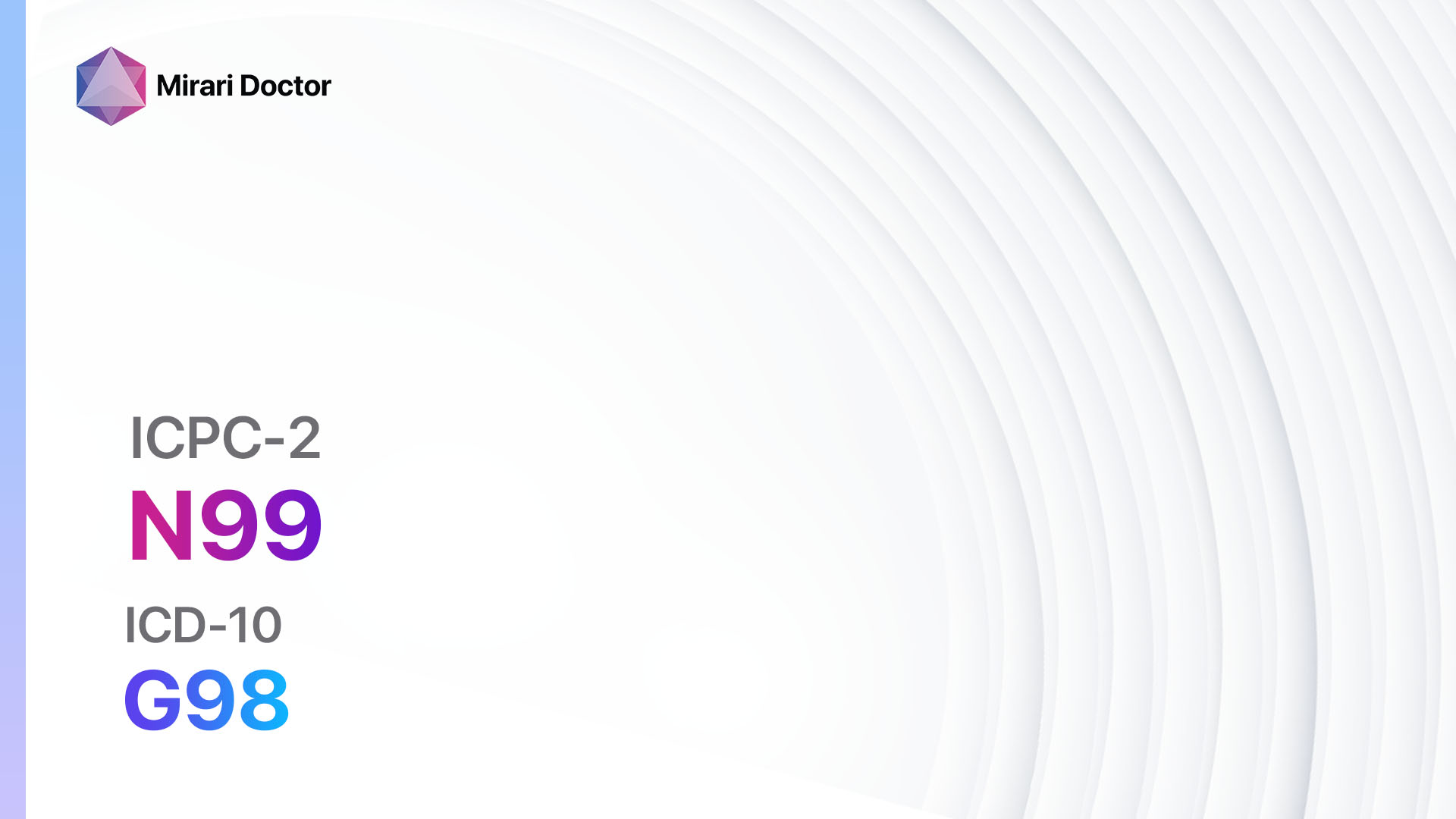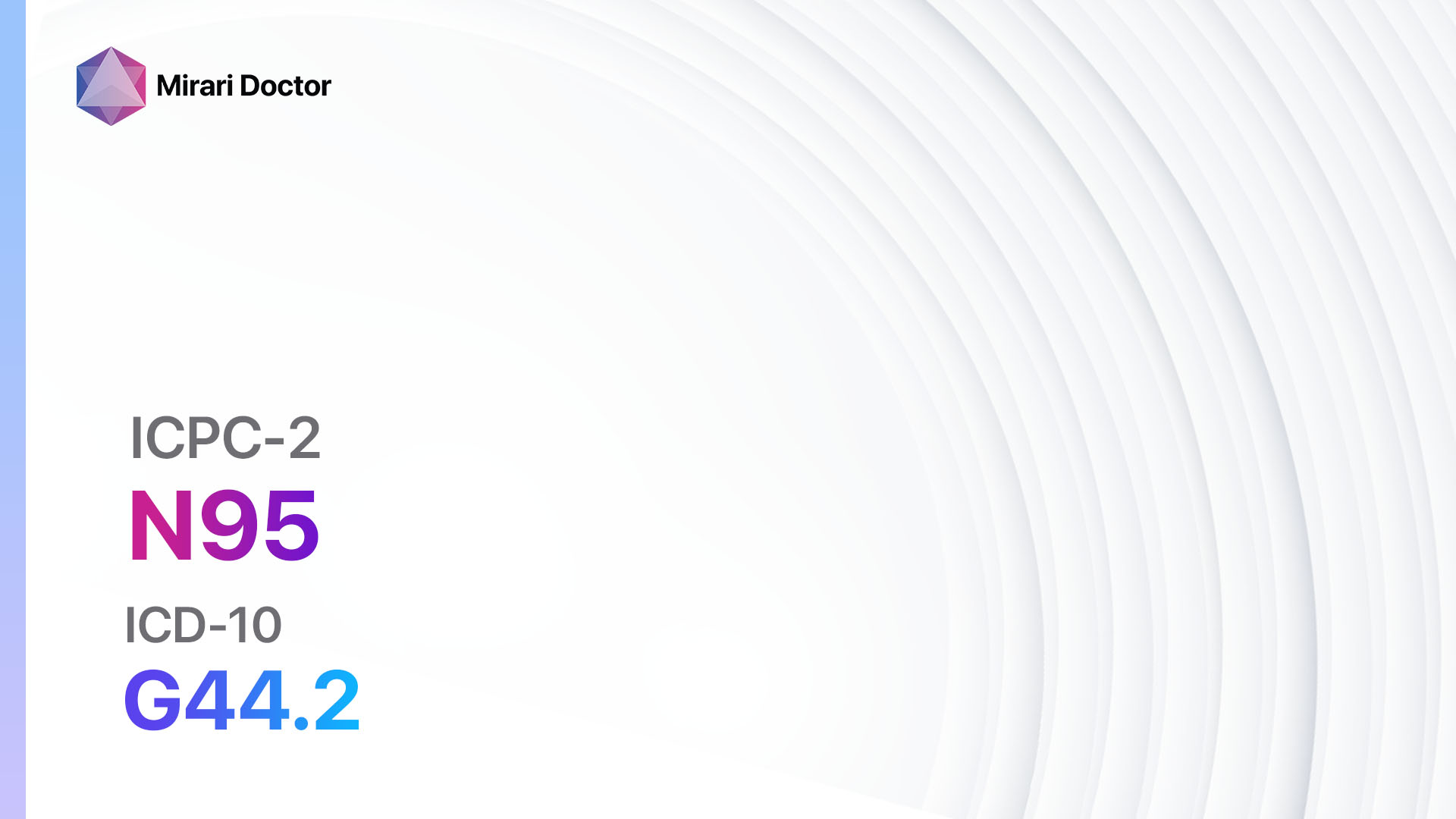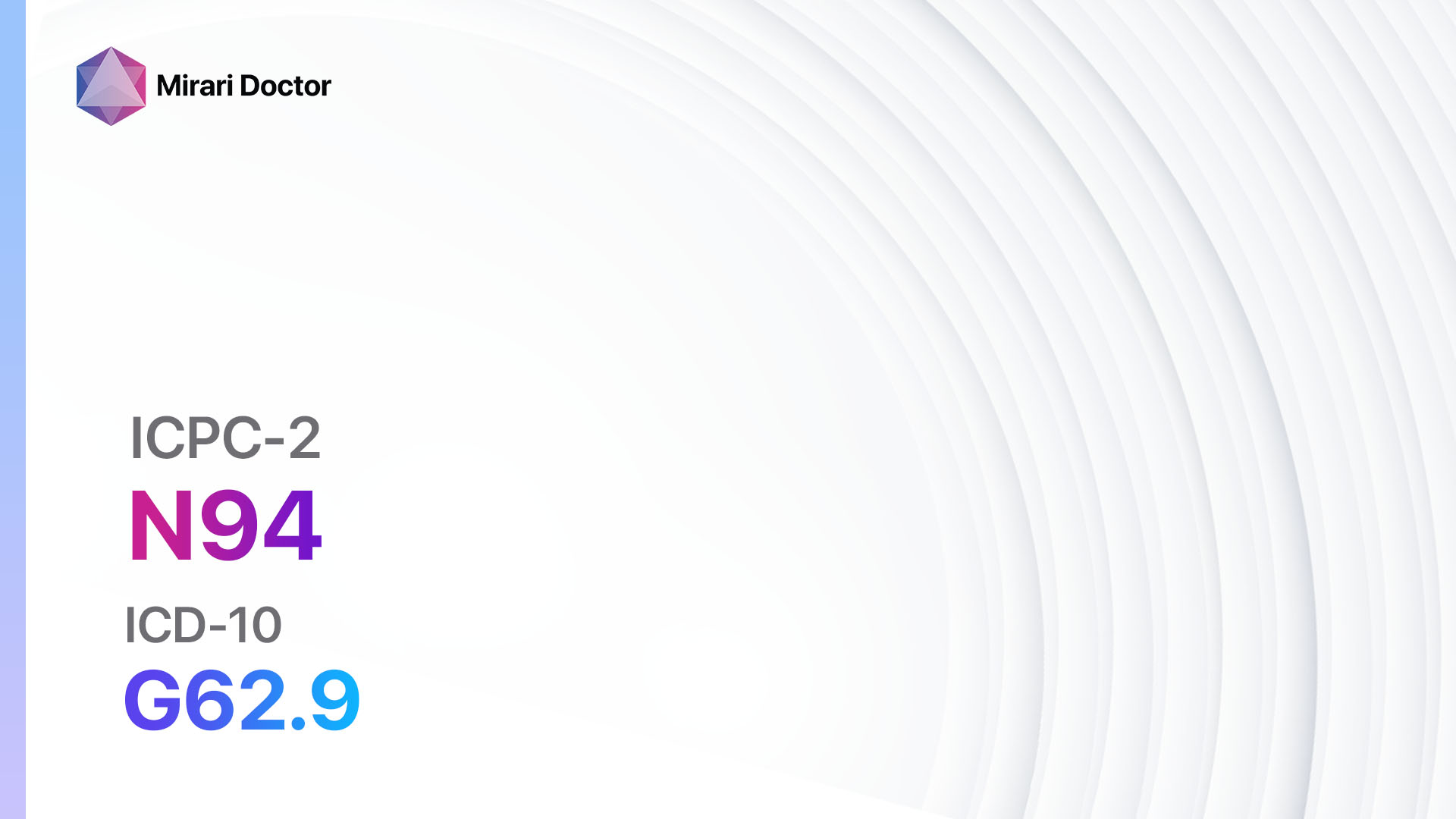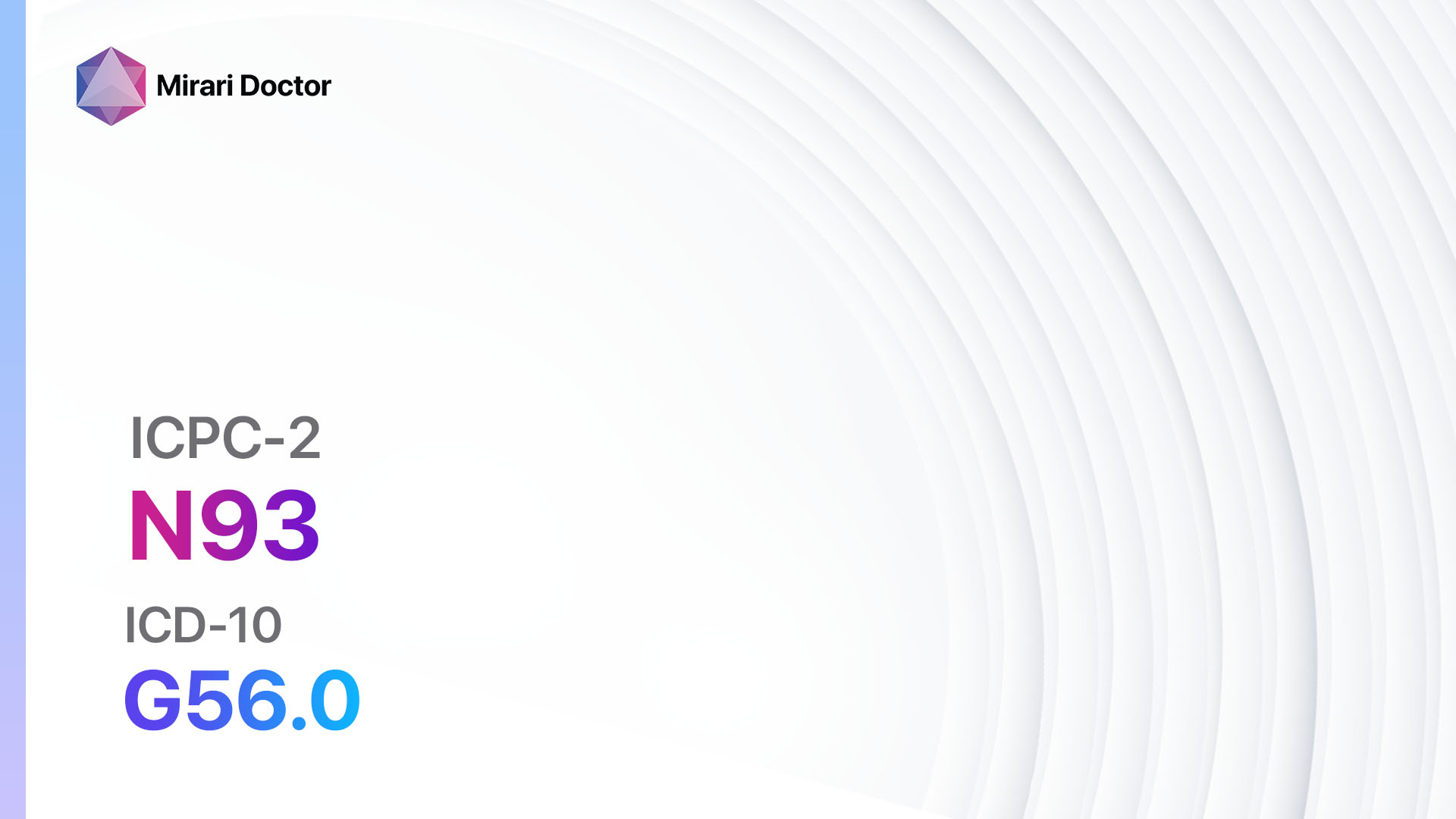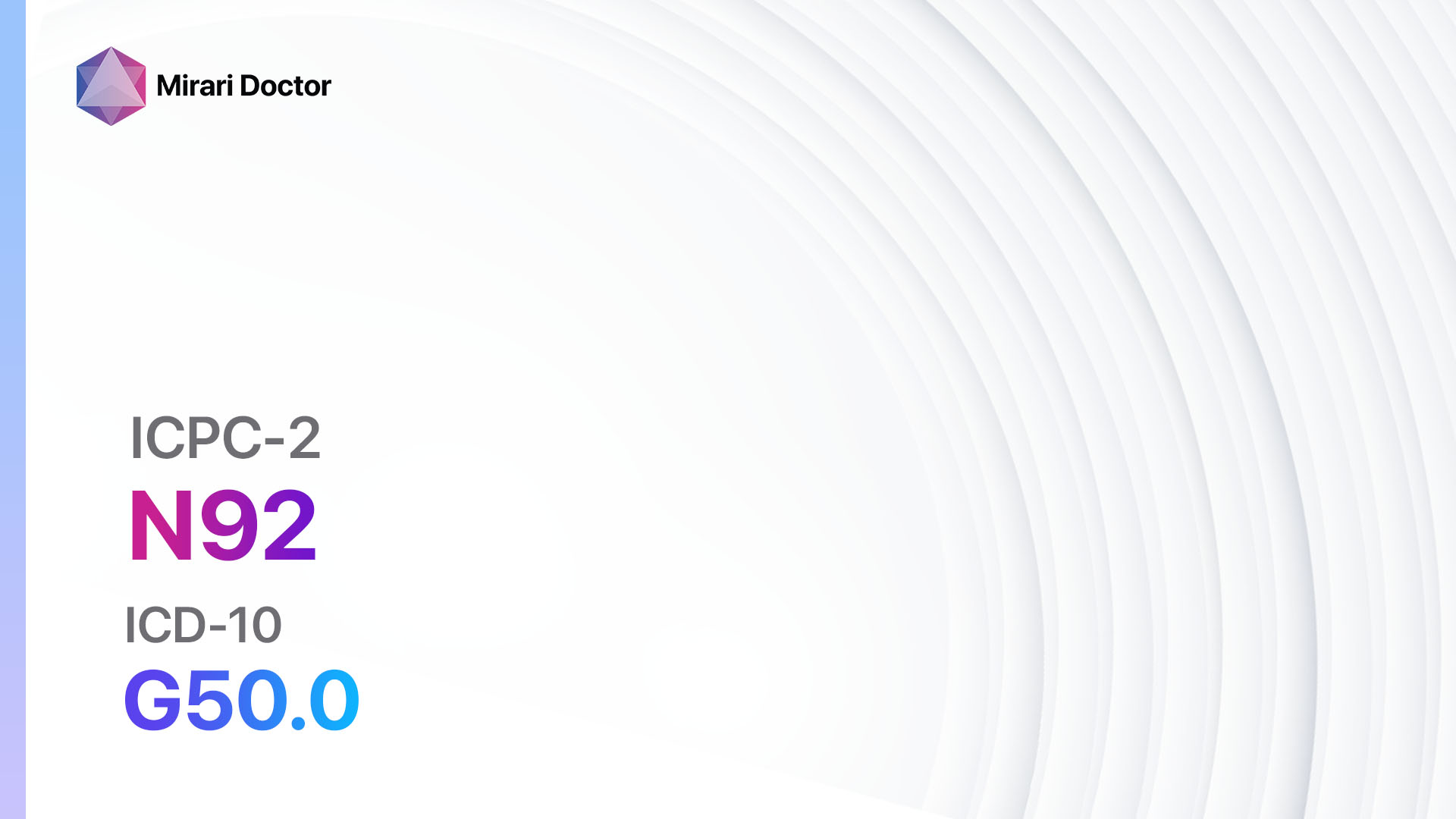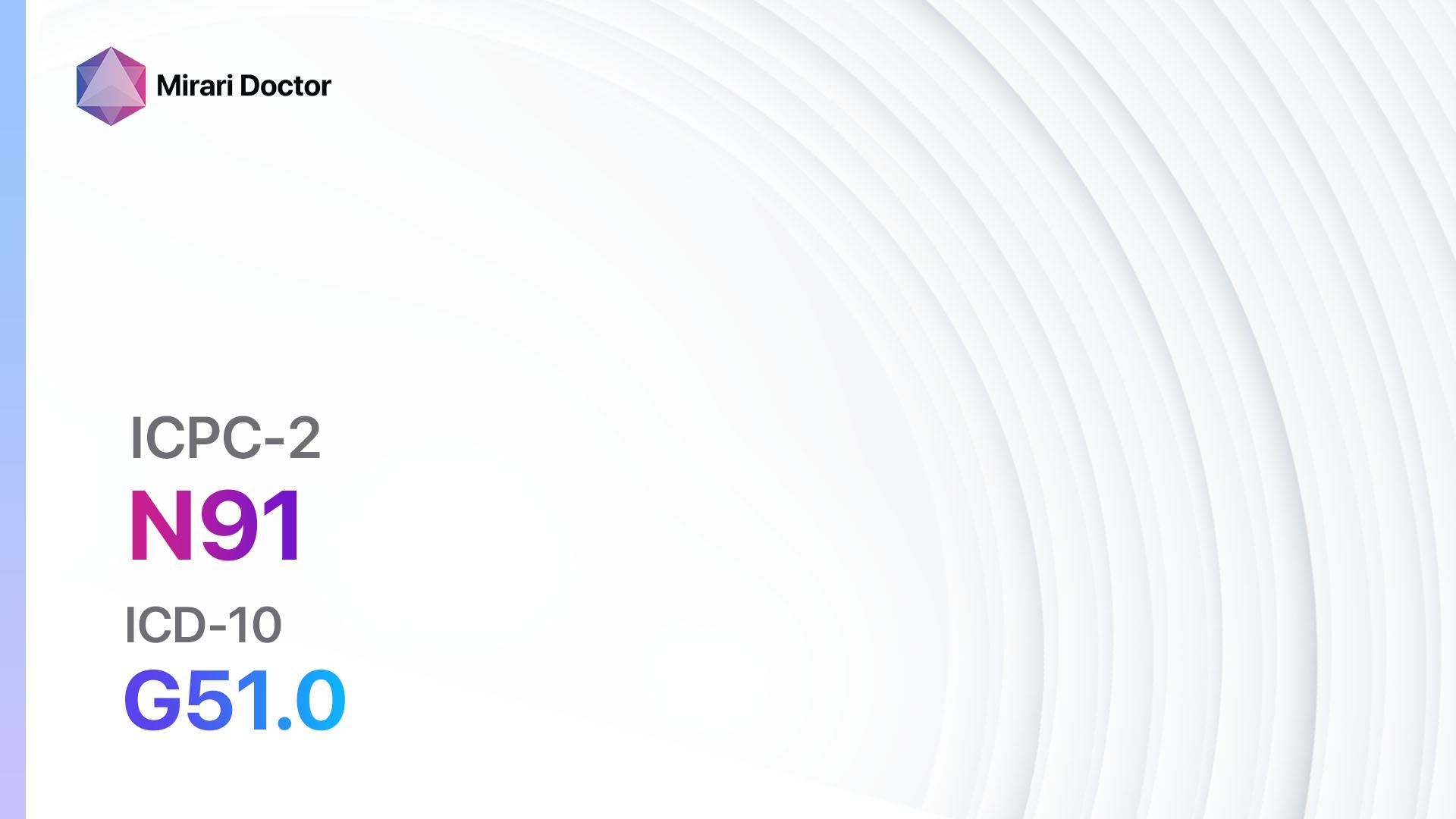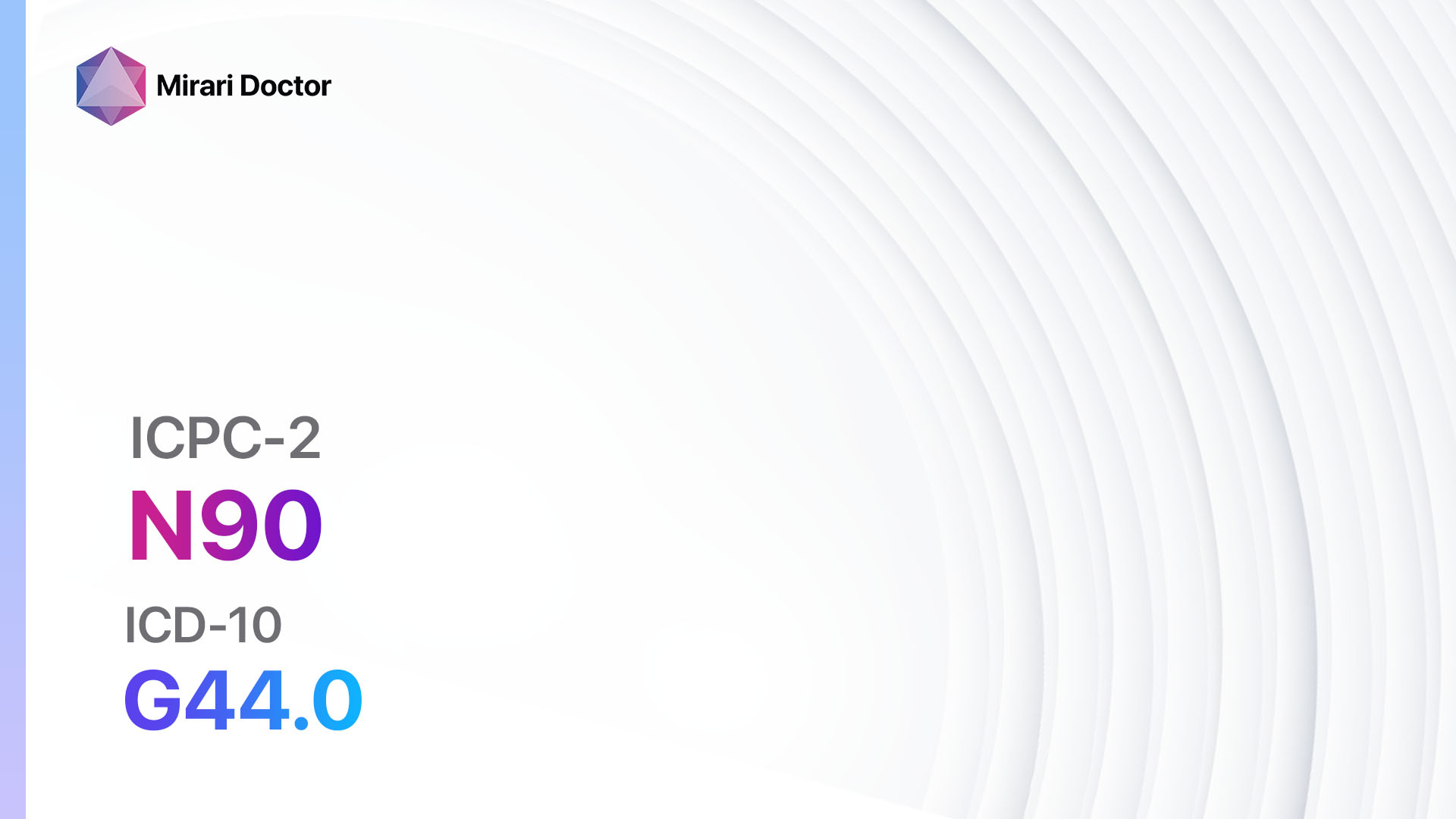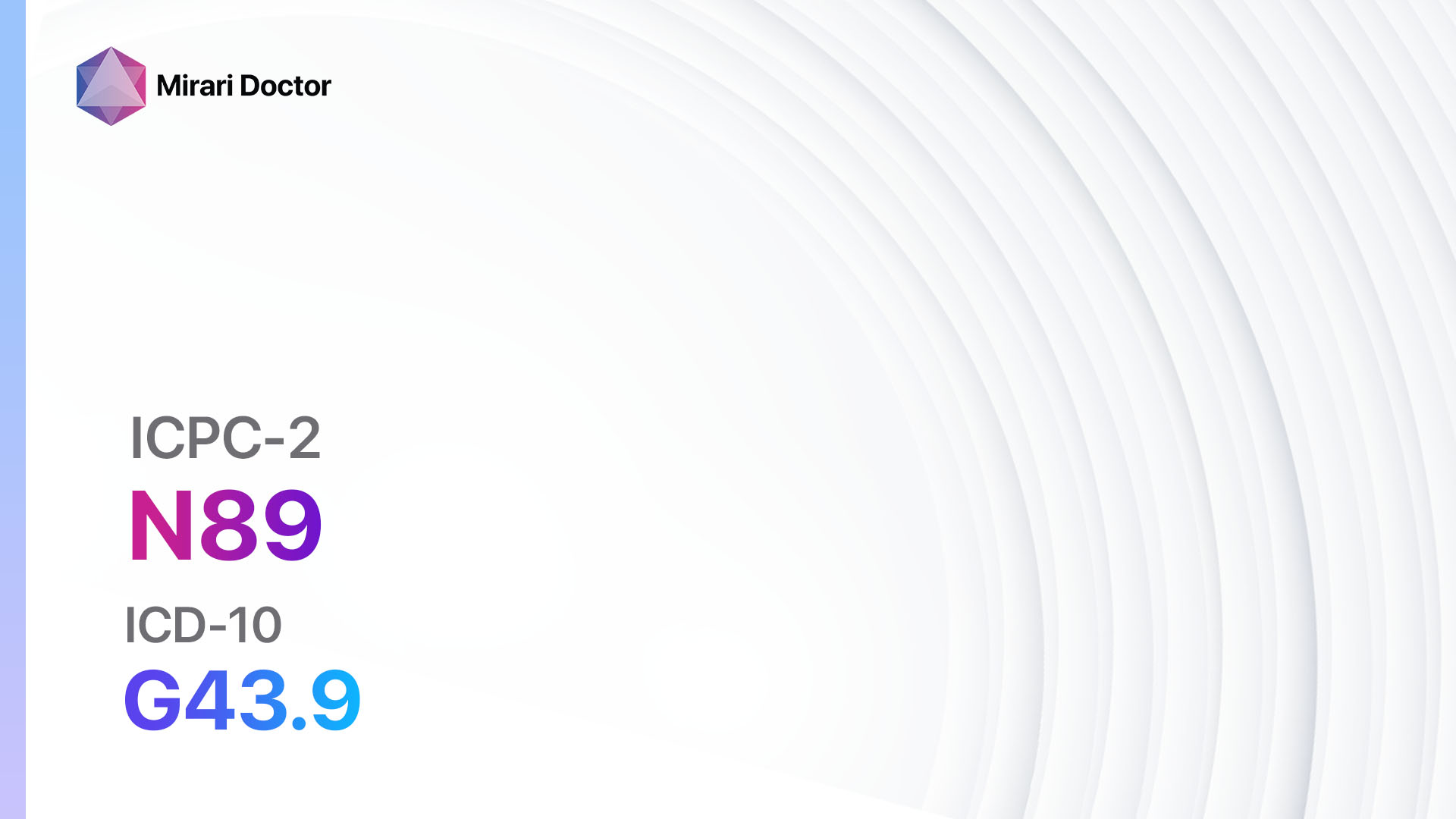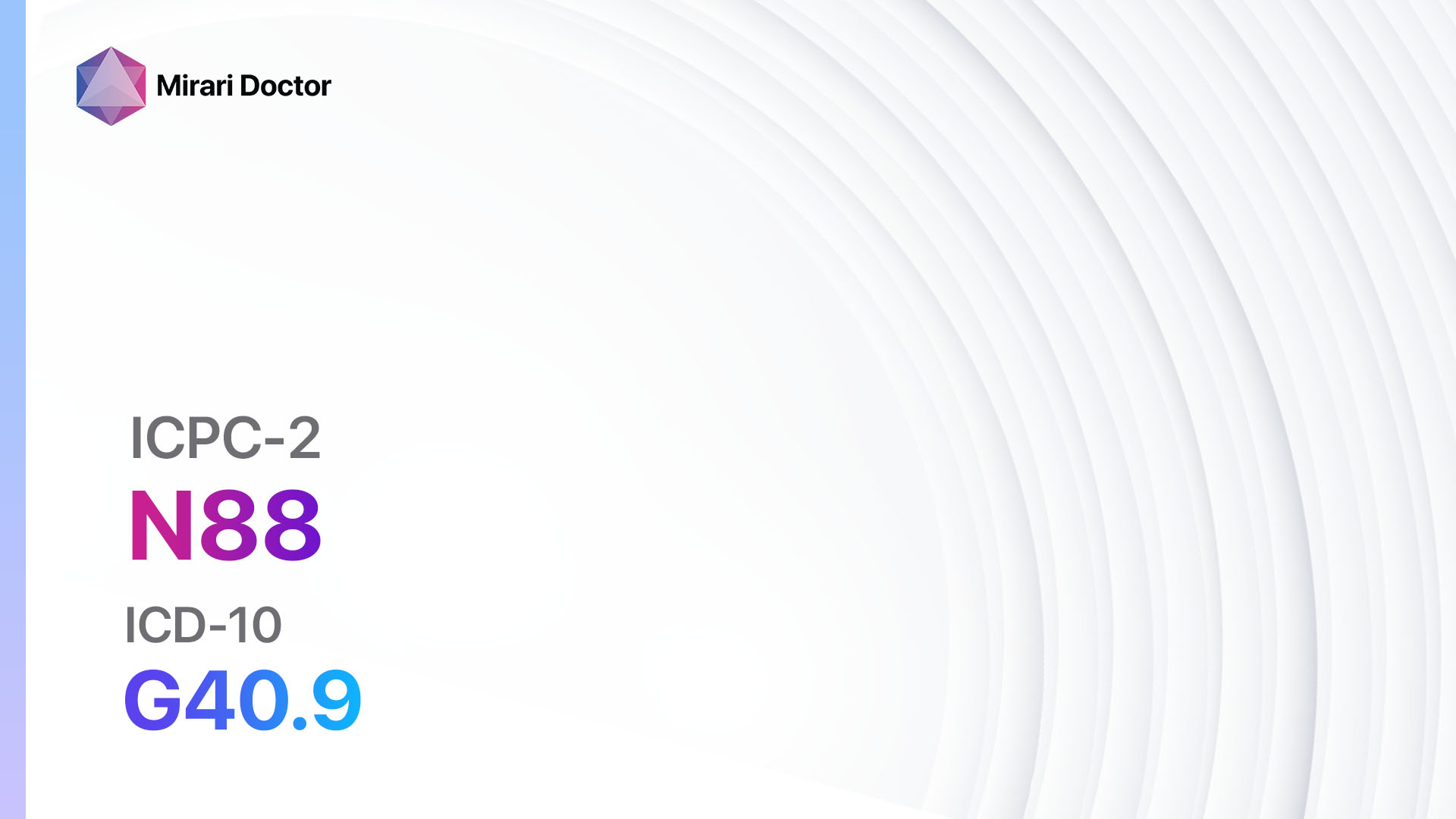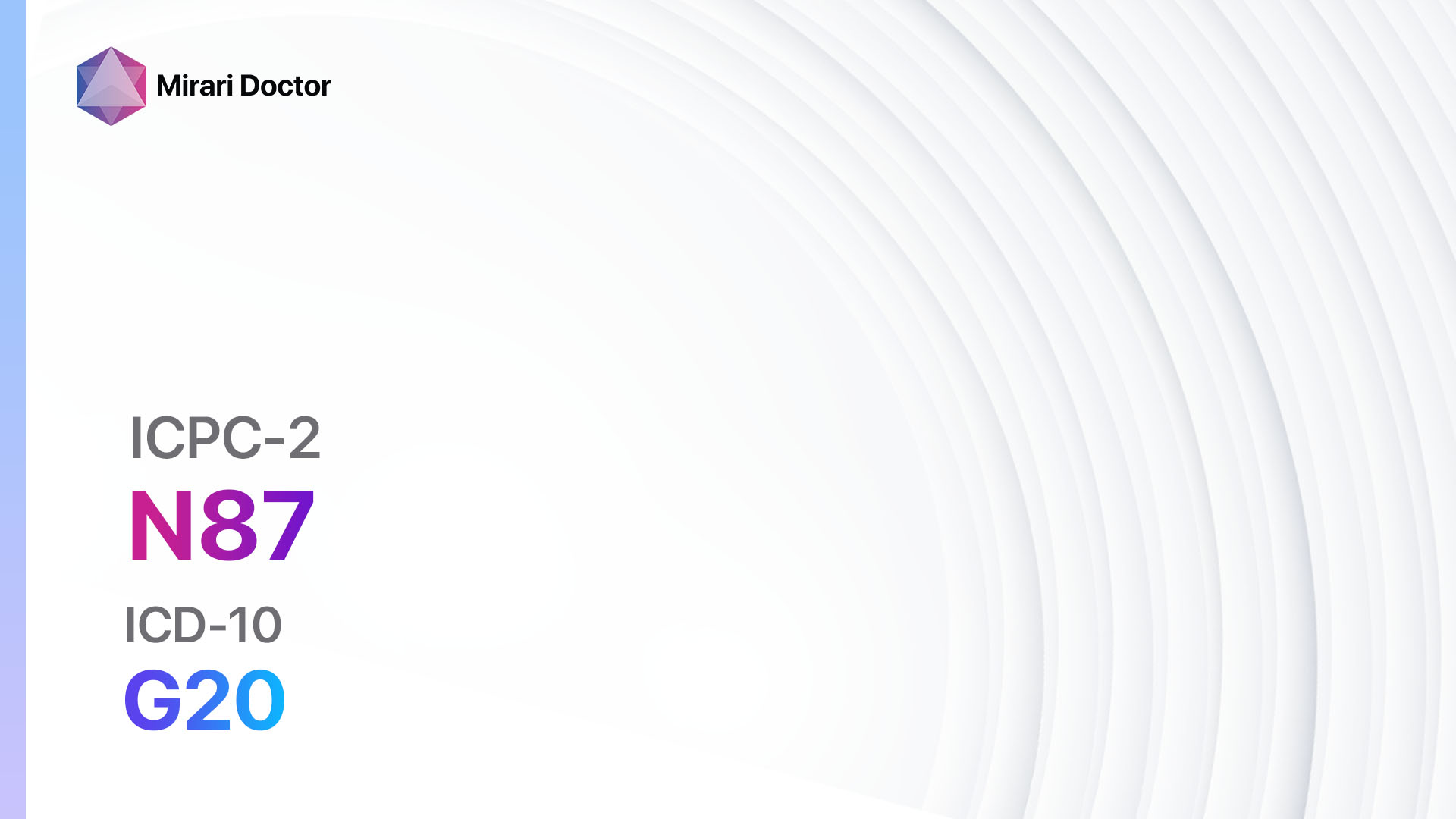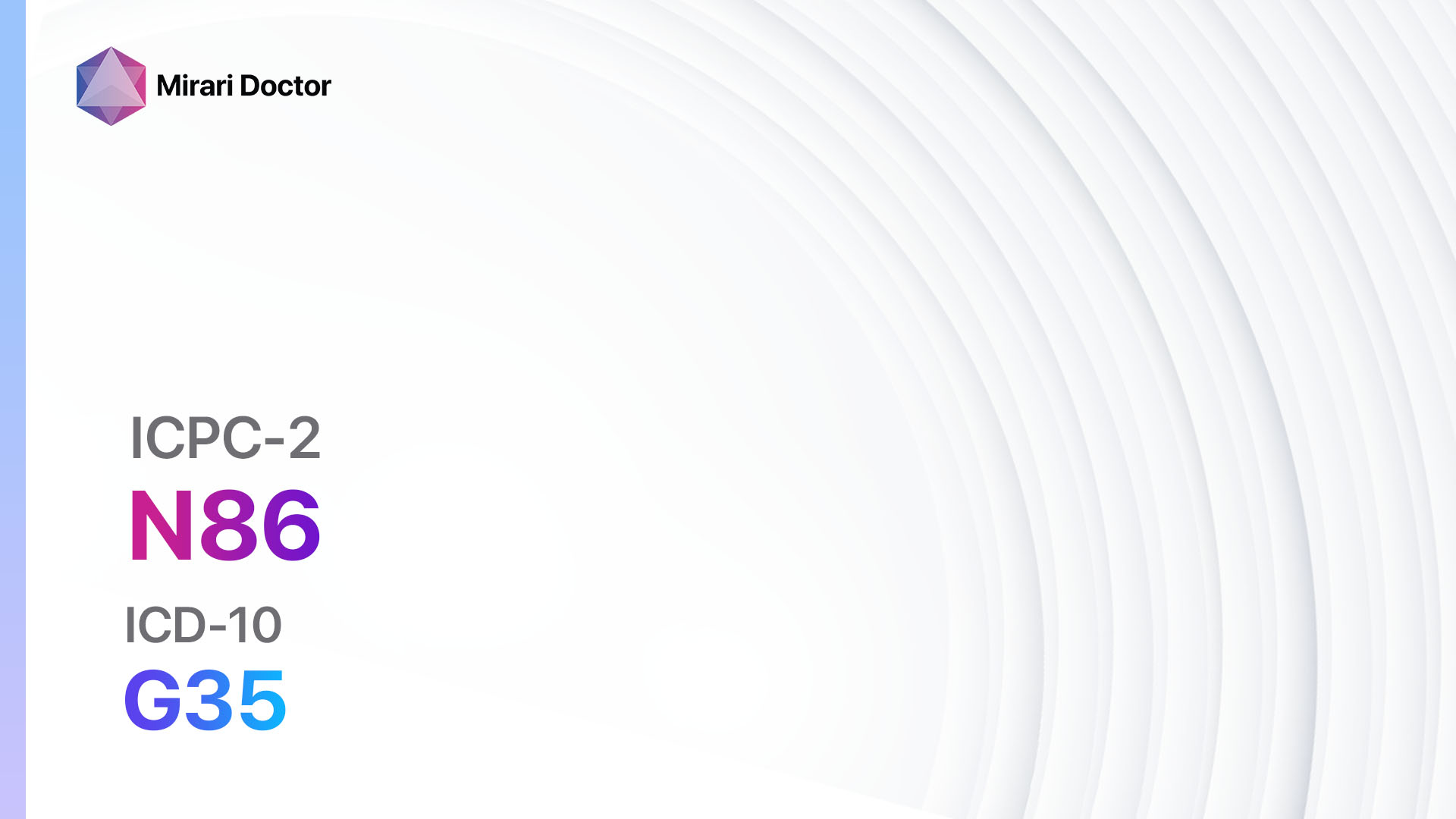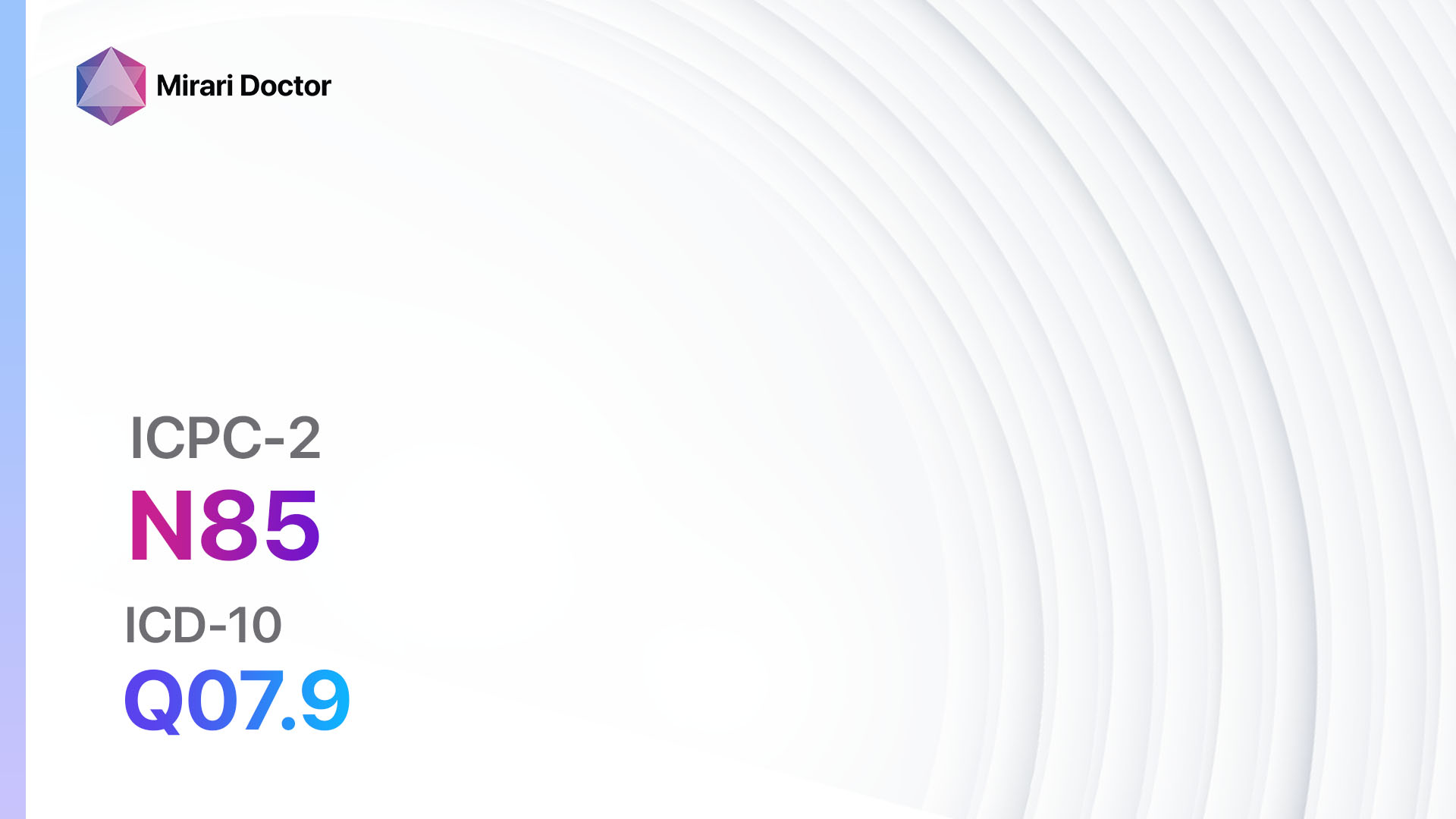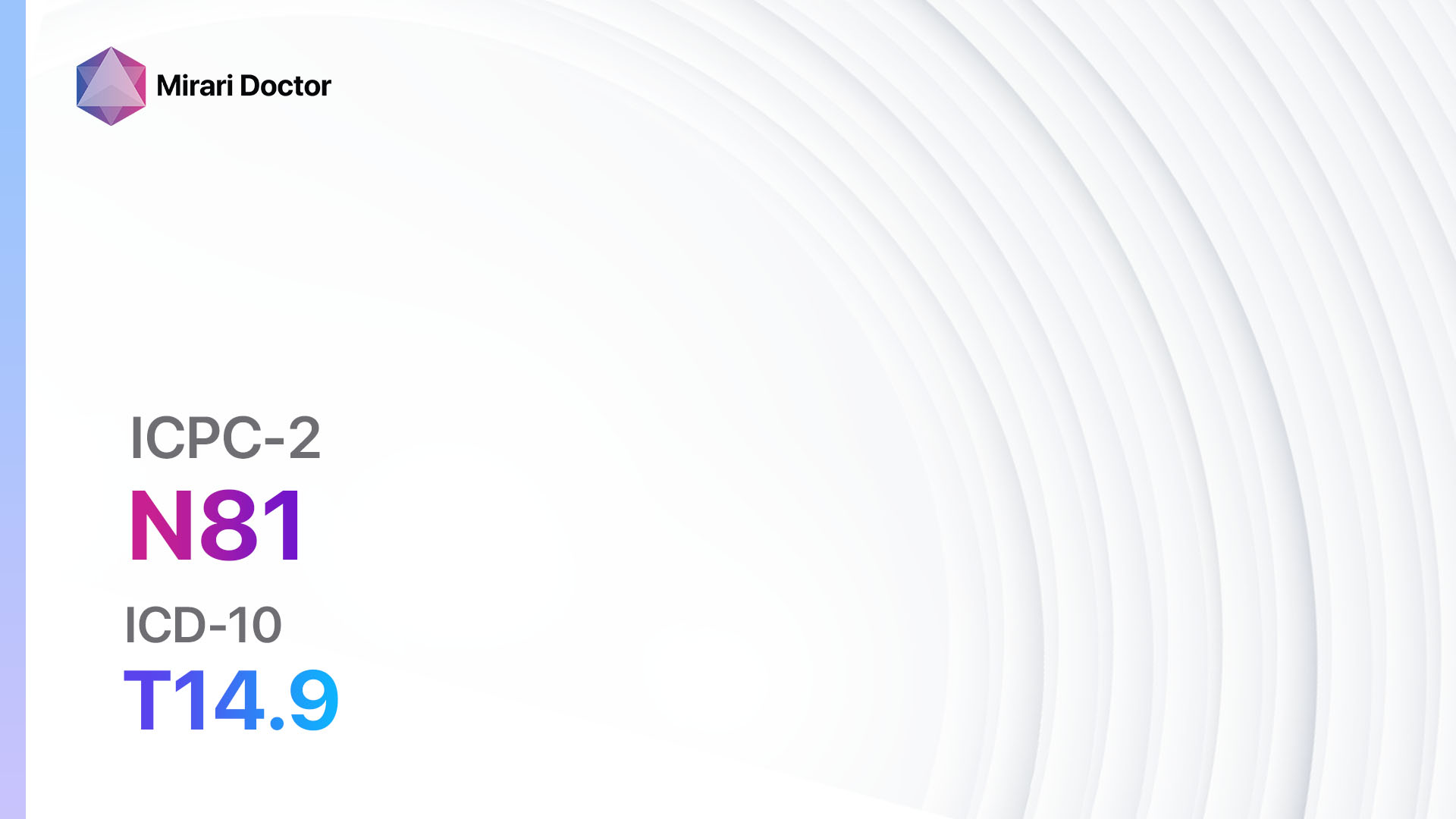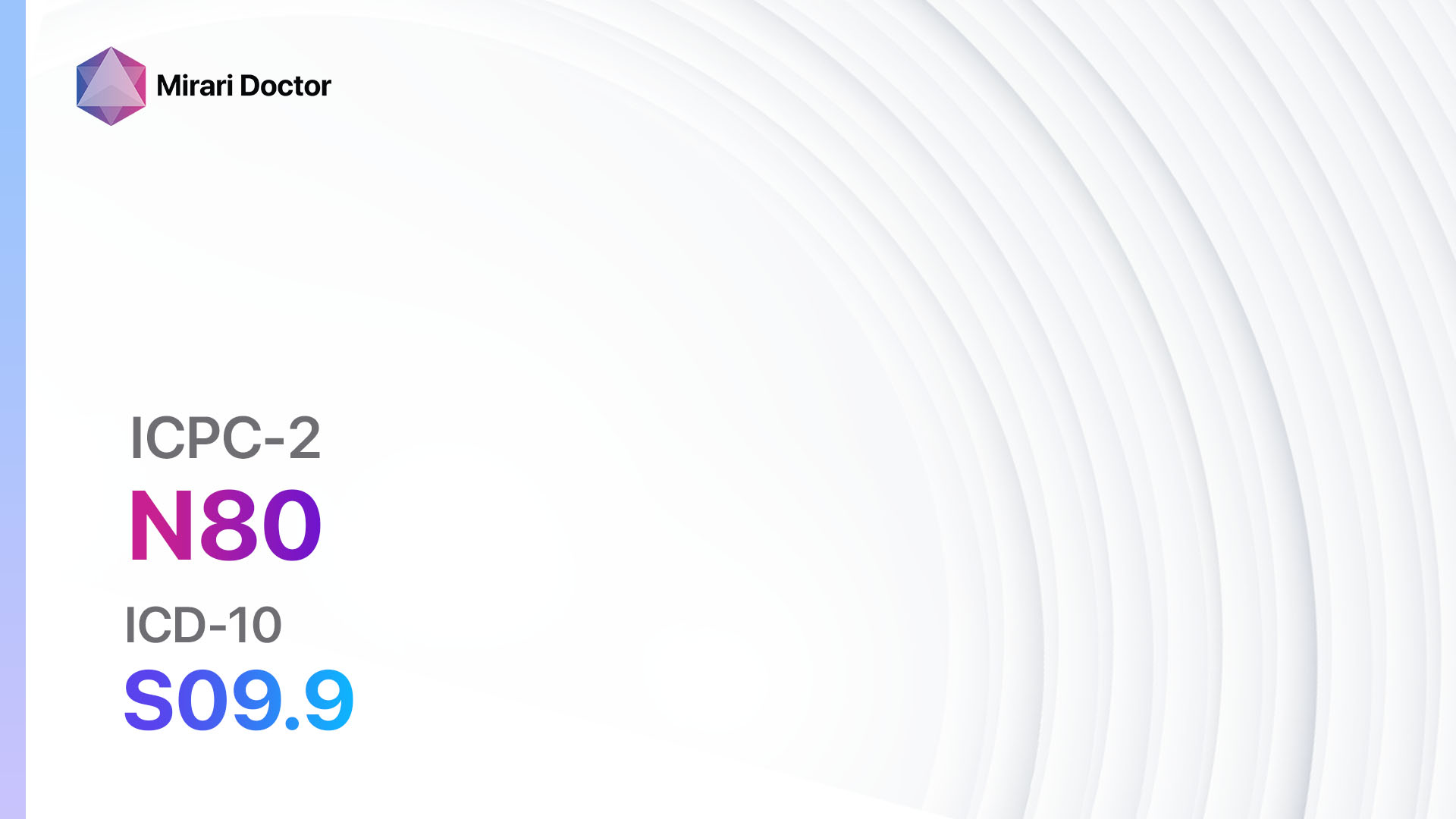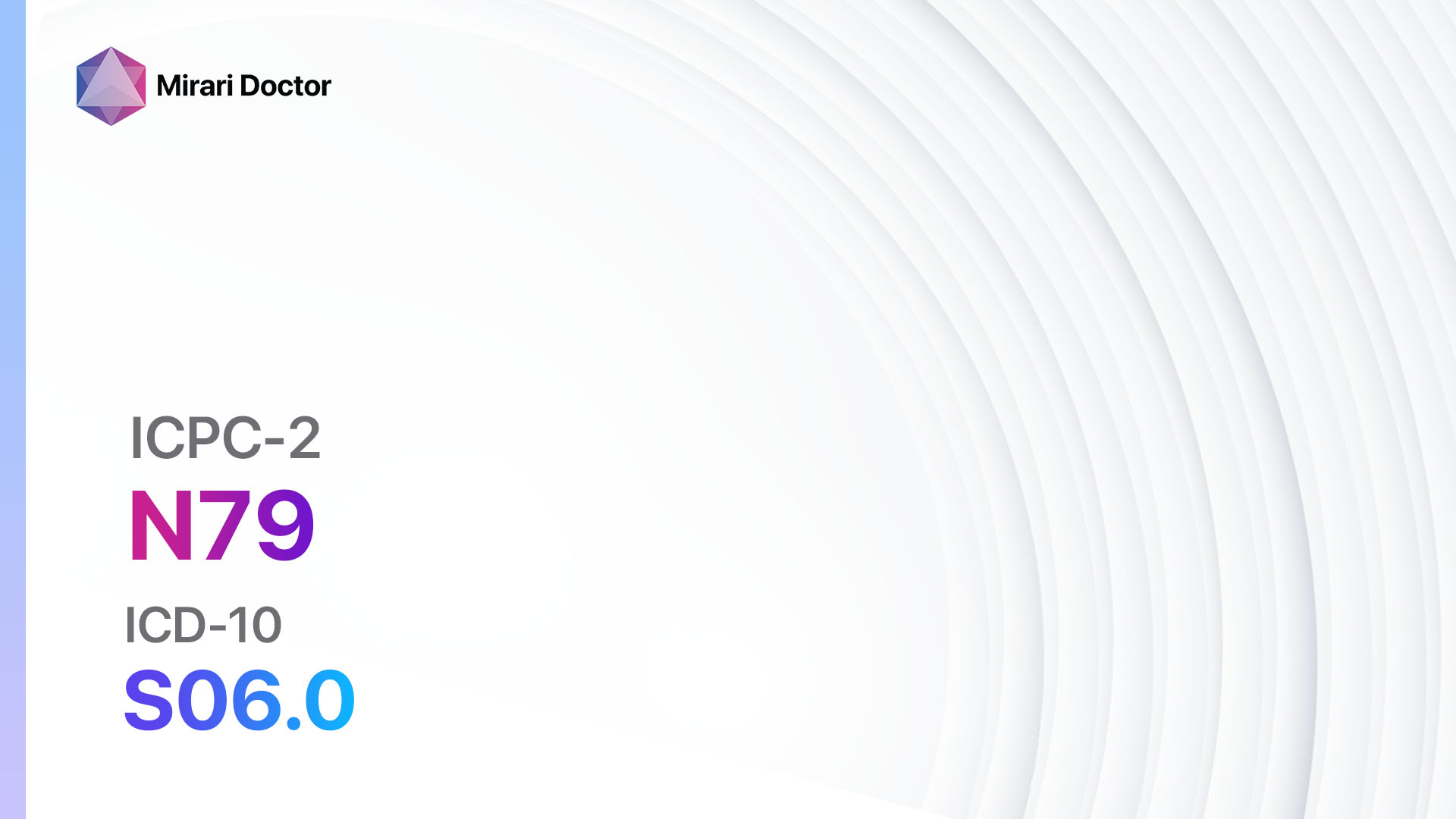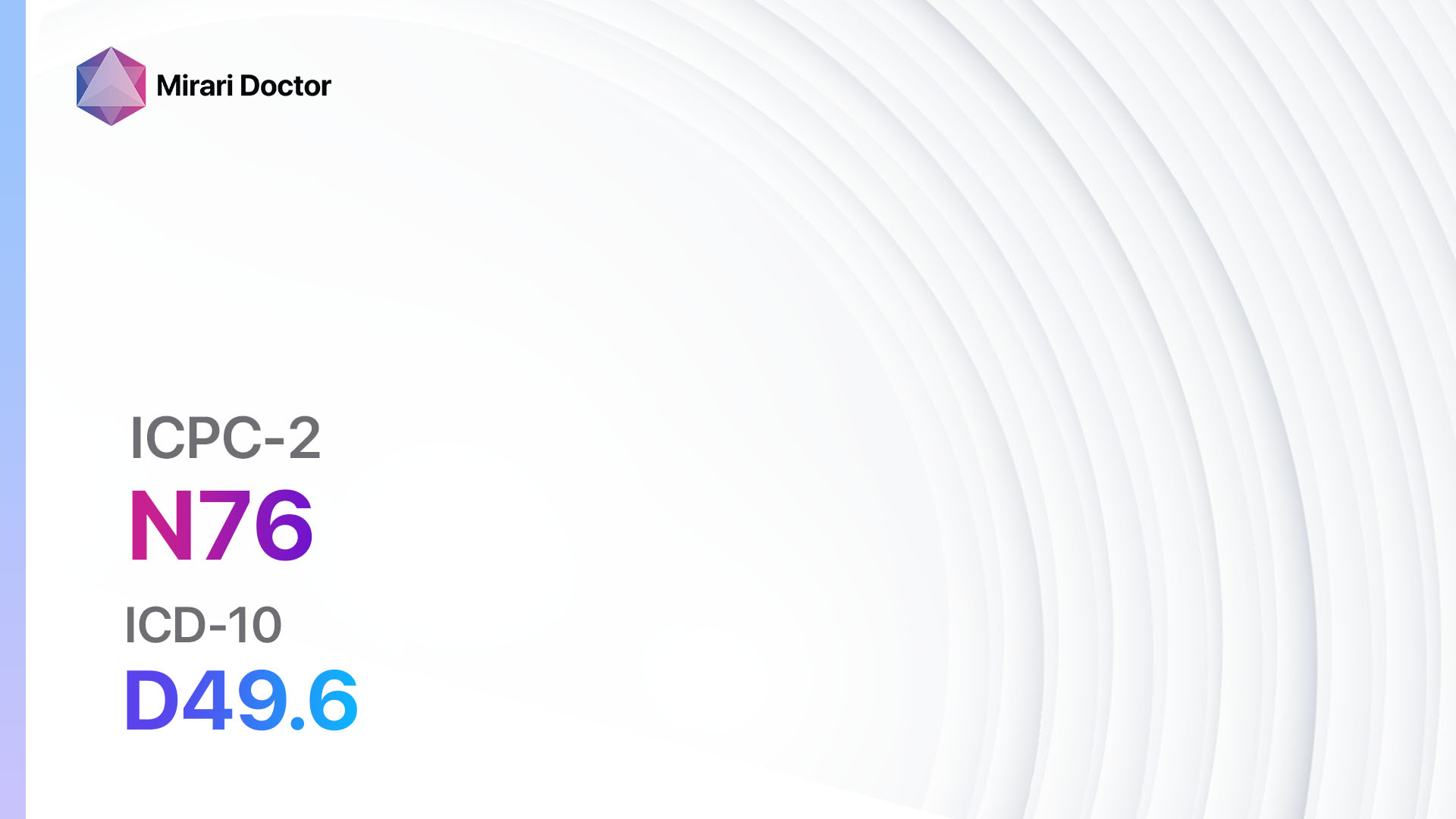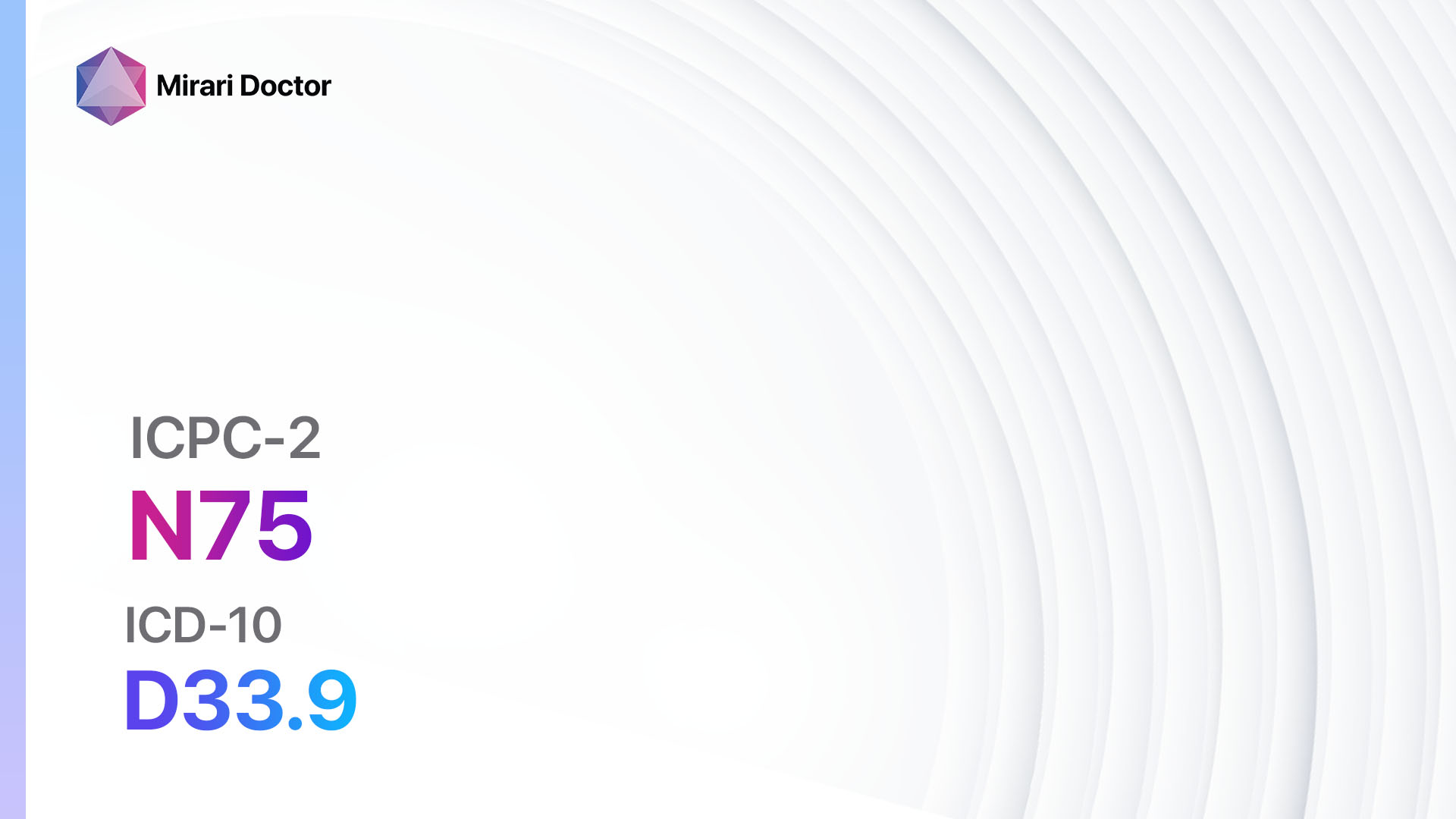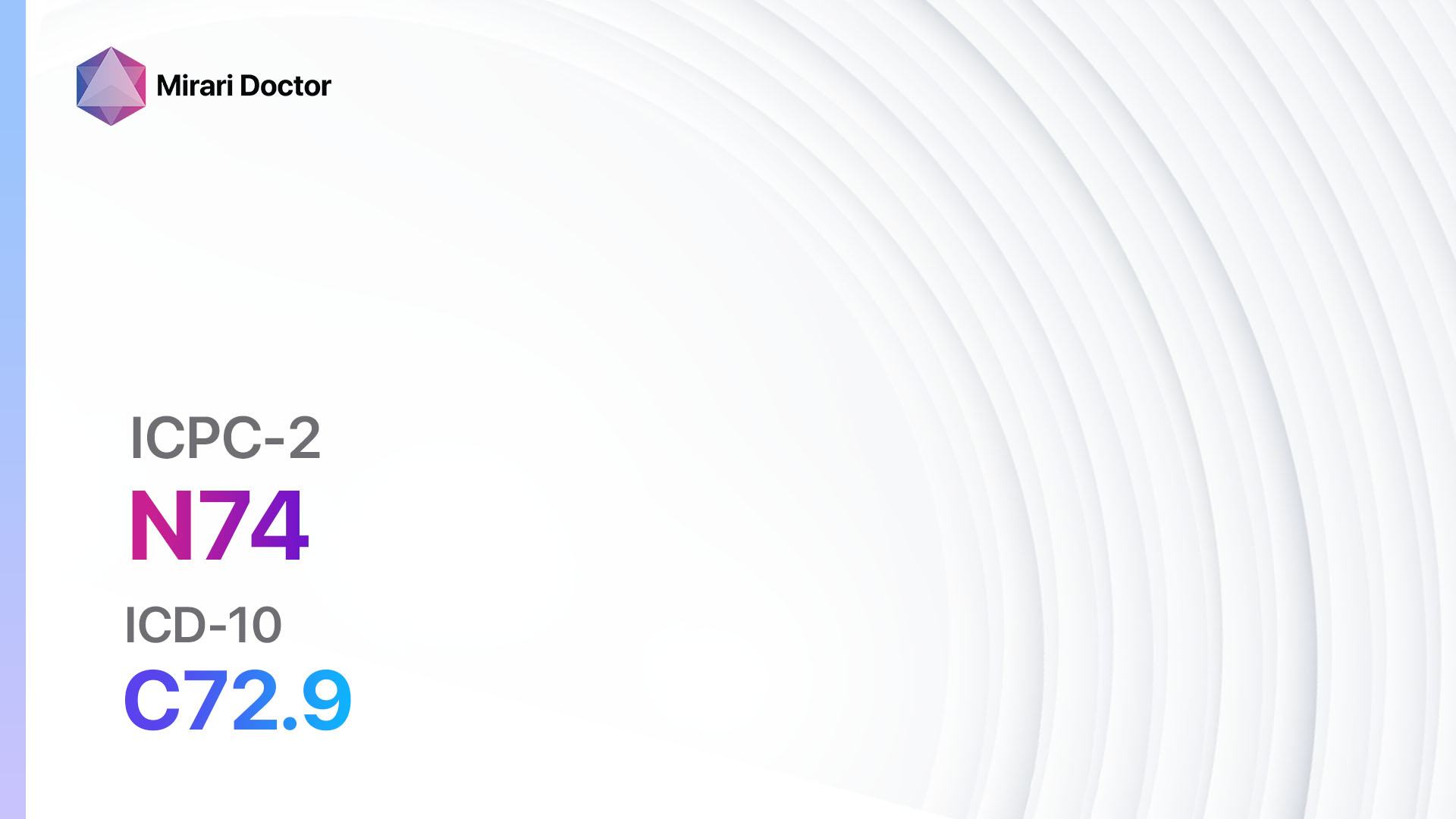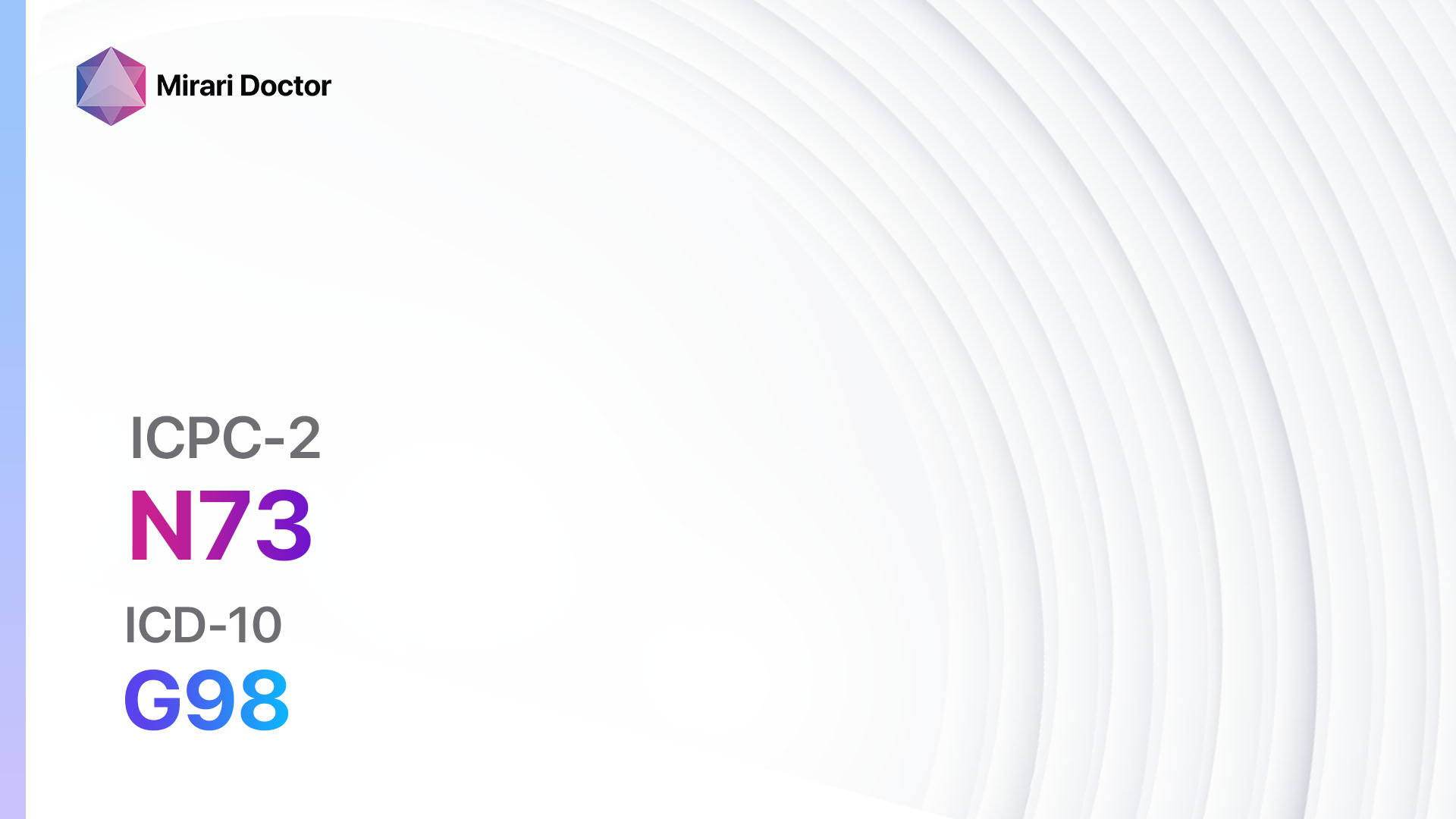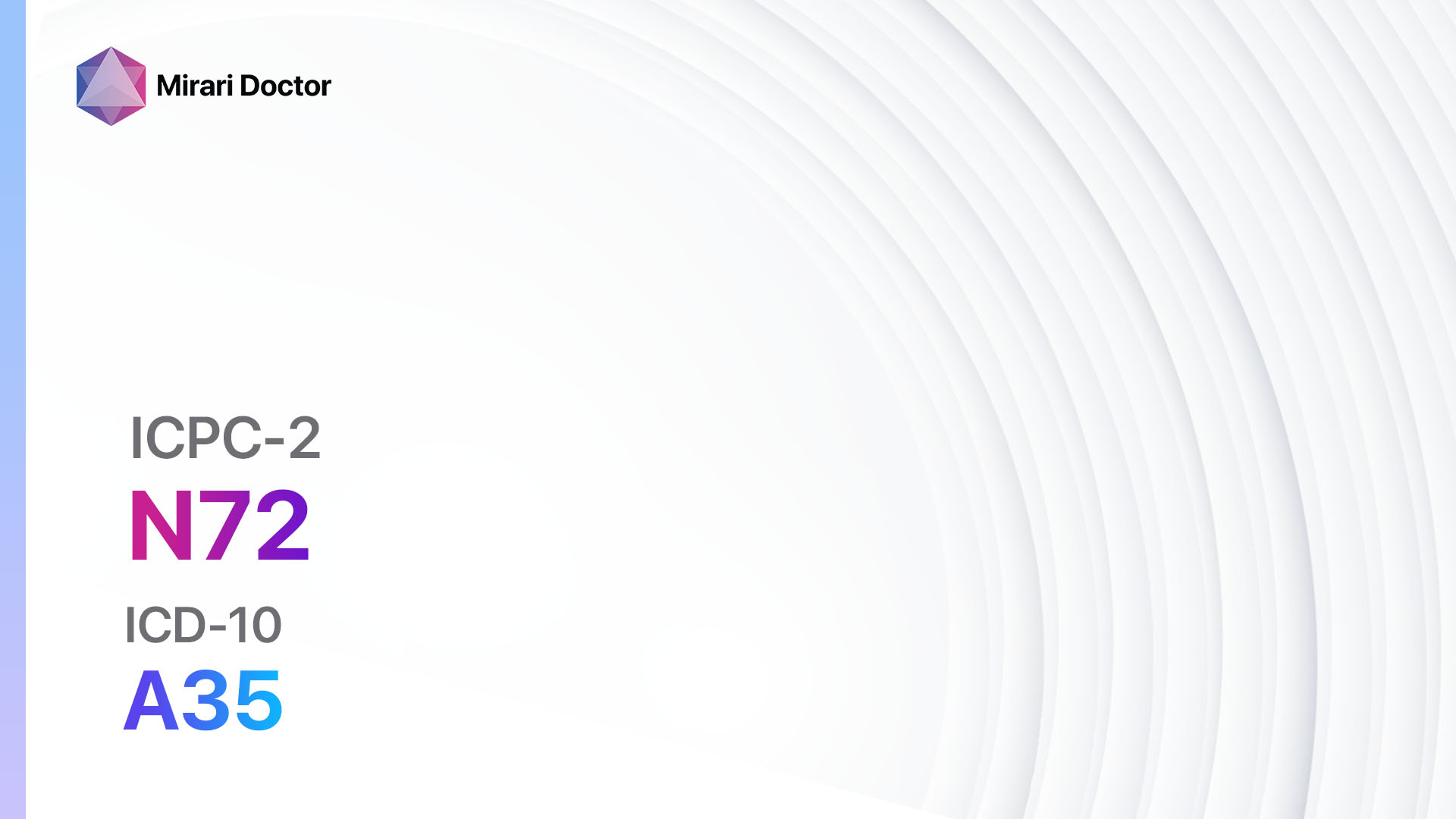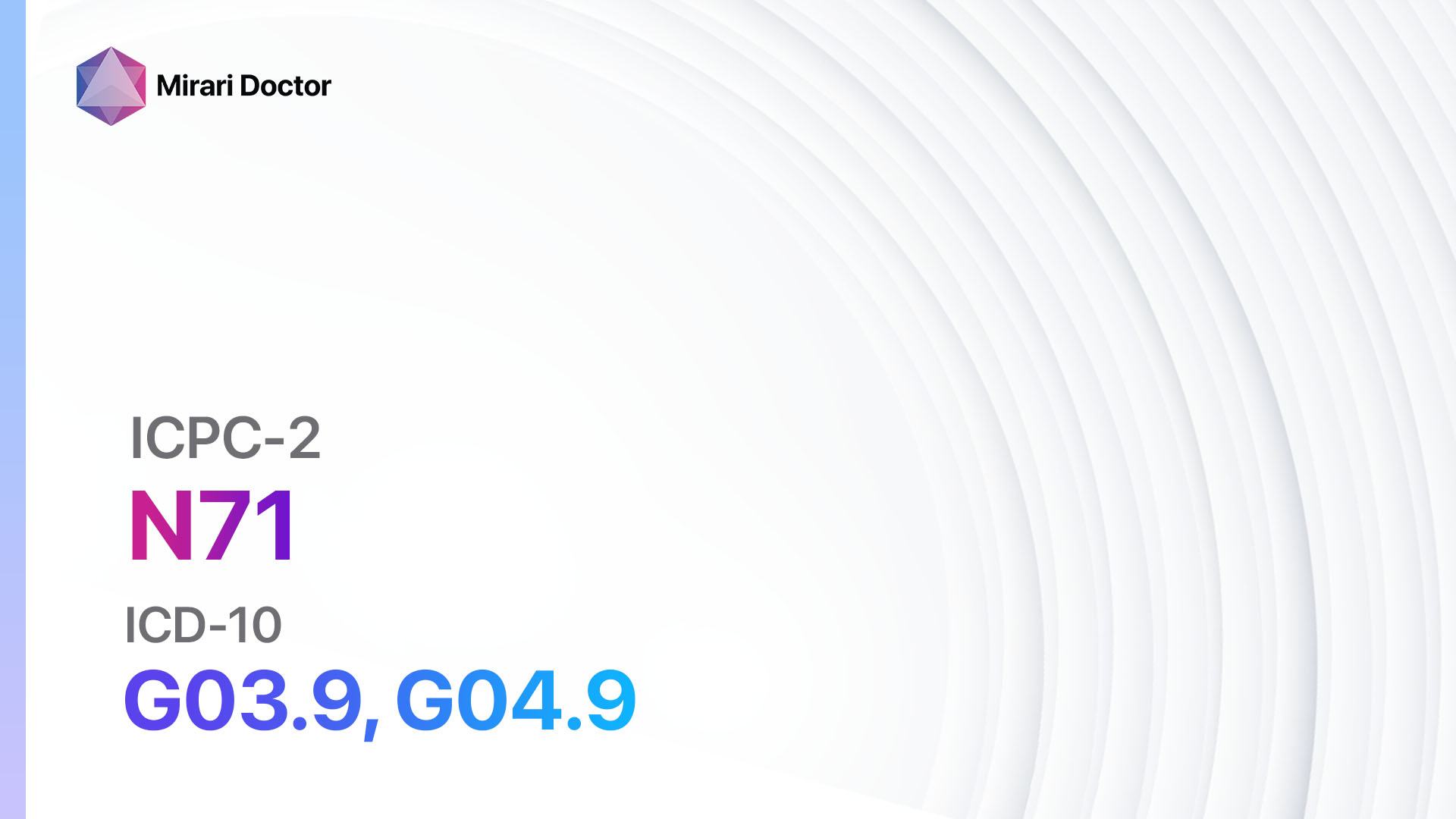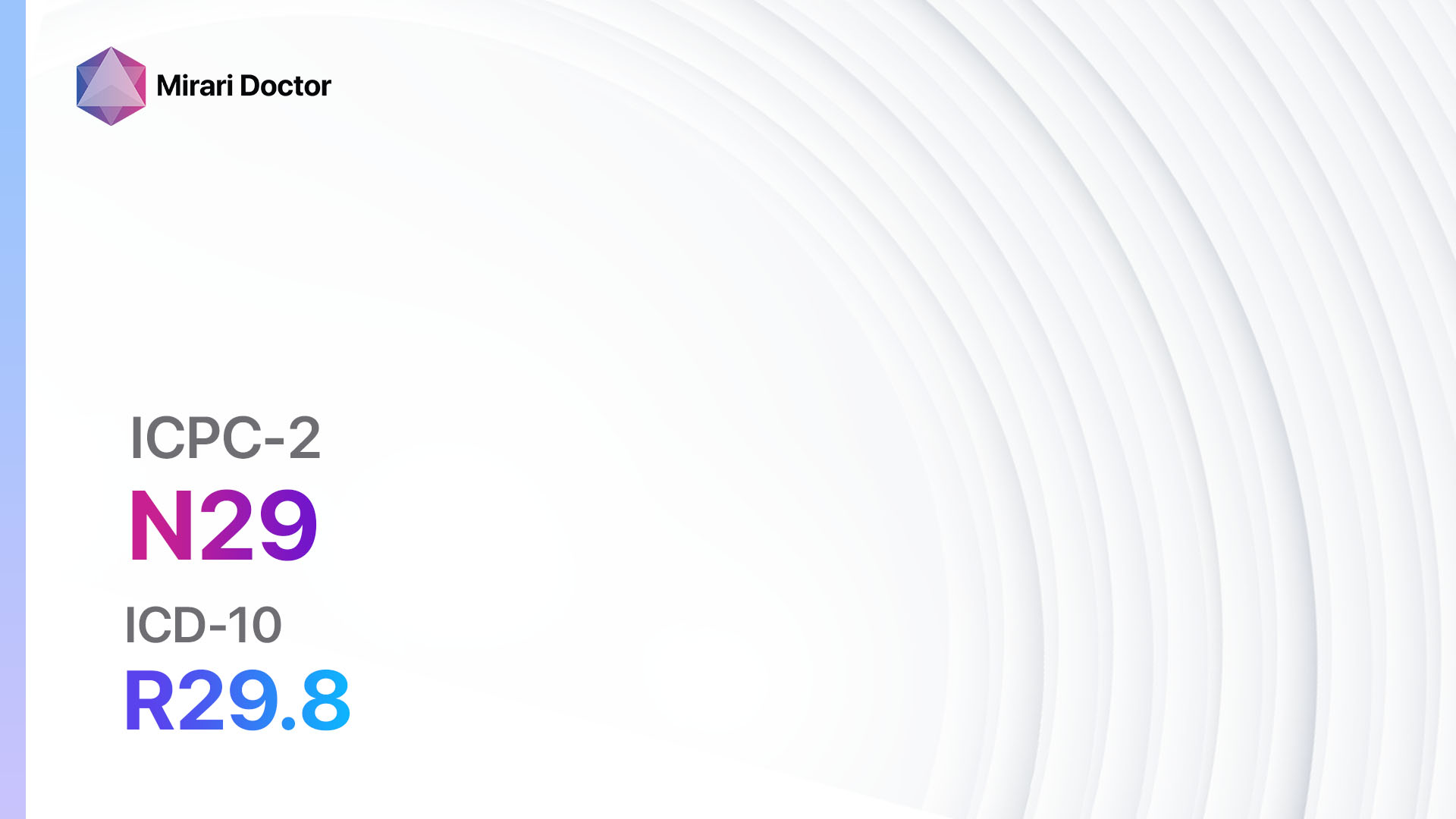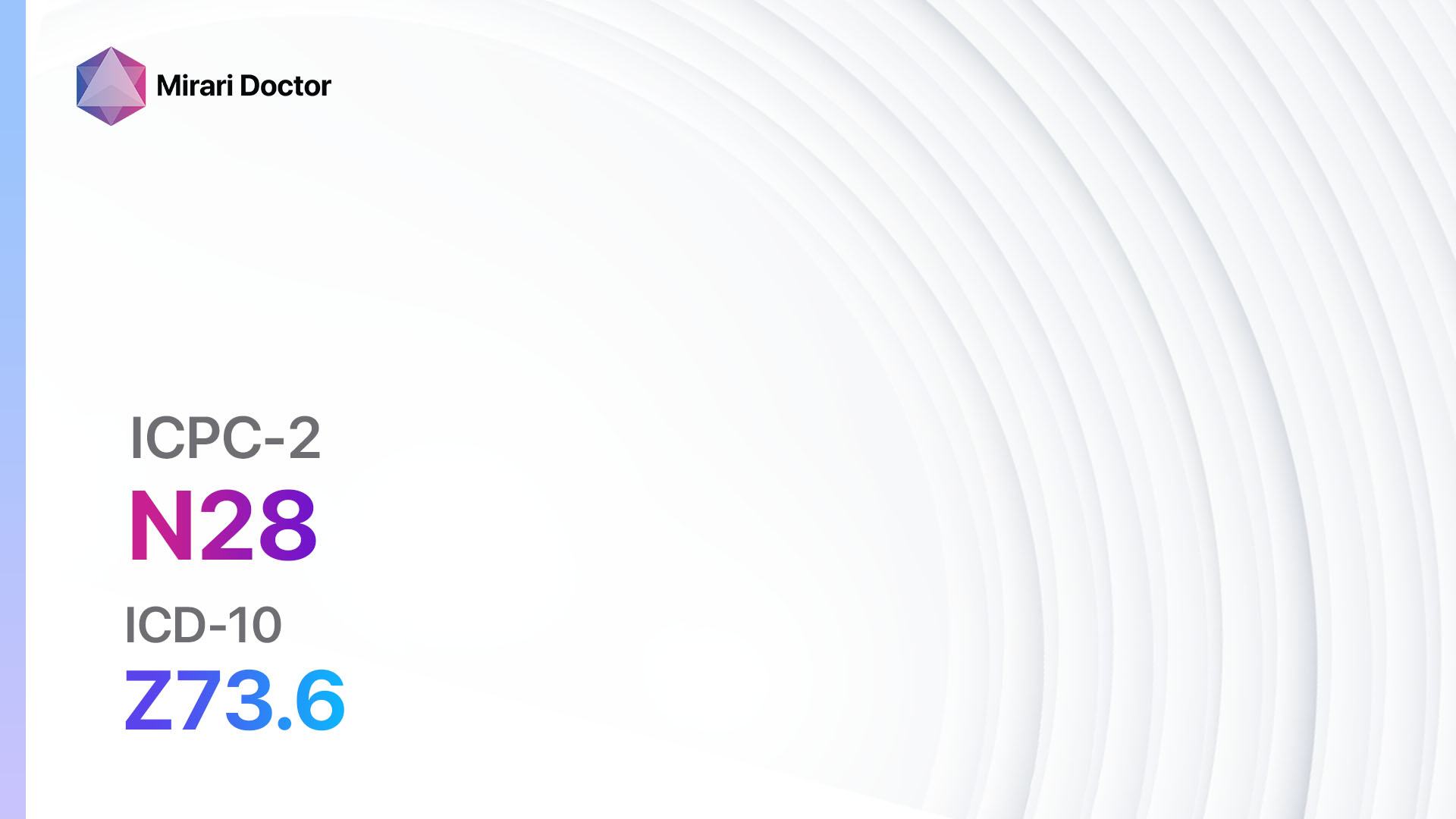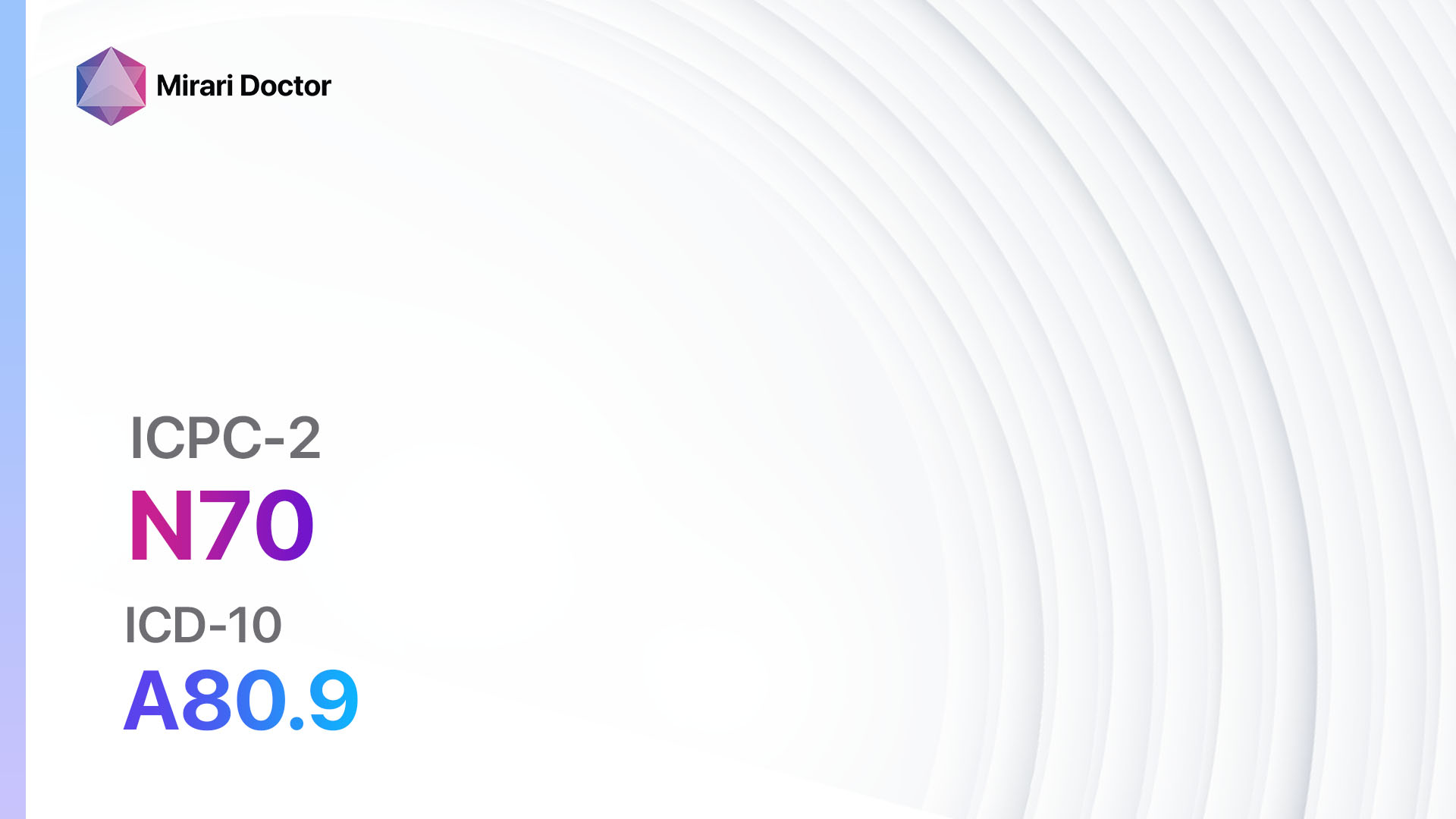
Introduction
Poliomyelitis, commonly known as polio, is a highly contagious viral infection that primarily affects the nervous system. It is caused by the poliovirus and can lead to paralysis or even death in severe cases.[1][2][6] The aim of this guide is to provide healthcare professionals with a comprehensive overview of the diagnosis and possible interventions for poliomyelitis.
Codes
Symptoms
- Fever: Patients may experience a sudden onset of high fever.[1][2]
- Fatigue: Generalized weakness and fatigue are common symptoms.[1][3]
- Headache: Patients may complain of severe headaches.[1][2]
- Muscle pain: Muscle pain and stiffness may be present.[1][3]
- Nausea and vomiting: Some patients may experience gastrointestinal symptoms.[1][2]
- Sore throat: Patients may have a sore throat or difficulty swallowing.[1][2]
- Stiff neck: Stiffness in the neck may be present.[1][2]
- Back pain: Patients may complain of back pain.[1][3]
- Muscle weakness: Weakness or paralysis may occur, usually in the legs.[1][2][3]
Causes
- Poliovirus: Poliomyelitis is caused by infection with the poliovirus, which is transmitted through contaminated food, water, or direct contact with an infected person.[2][4][5]
- Lack of vaccination: Individuals who have not received the polio vaccine are at a higher risk of contracting the disease.[2][5]
Diagnostic Steps
Medical History
- Obtain a detailed medical history, including information about the patient’s vaccination status, recent travel, and exposure to individuals with polio.
- Inquire about the presence of symptoms such as fever, muscle weakness, or paralysis.[3][5]
Physical Examination
- Perform a thorough physical examination, focusing on neurological signs such as muscle weakness, decreased reflexes, and abnormal muscle tone.
- Assess the patient’s range of motion and muscle strength.[3][5]
Laboratory Tests
- Stool sample: Collect a stool sample to test for the presence of the poliovirus.[2][3][5]
- Throat swab: Obtain a throat swab to detect the poliovirus.[2][3][5]
- Blood tests: Perform blood tests to assess the patient’s immune response and rule out other possible causes of symptoms.[2][3][5]
Diagnostic Imaging
- X-rays may be used to evaluate the condition of the bones and joints.[3][5]
- MRI: Magnetic resonance imaging (MRI) can provide detailed images of the brain and spinal cord, helping to identify any abnormalities.[3][5]
Other Tests
- Electromyography (EMG): EMG can assess the electrical activity of muscles and help determine the extent of muscle damage.[3][5]
- Nerve conduction studies: These tests measure the speed at which electrical impulses travel through nerves, aiding in the diagnosis of nerve damage.[3][5]
Follow-up and Patient Education
- Schedule regular follow-up appointments to monitor the patient’s progress and assess any long-term complications.
- Provide education to the patient and their caregivers about the importance of vaccination and proper hygiene practices to prevent the spread of polio.[2][5]
Possible Interventions
Traditional Interventions
Medications:
Top 5 drugs for Poliomyelitis:
- Poliomyelitis vaccine (e.g., Inactivated poliovirus vaccine, Oral poliovirus vaccine):
- Cost: The cost of polio vaccines varies depending on the formulation and location, but it is generally affordable.
- Contraindications: Allergy to vaccine components, immunodeficiency.
- Side effects: Mild fever, soreness at the injection site.
- Severe side effects: Anaphylaxis (rare).
- Drug interactions: No significant drug interactions.
- Warning: Vaccination is essential for prevention and control of polio.
- Pain relievers (e.g., Acetaminophen, Ibuprofen):
- Cost: Generic versions are inexpensive.
- Contraindications: Allergy to the medication, active gastrointestinal bleeding.
- Side effects: Upset stomach, headache.
- Severe side effects: Liver damage (with excessive use of acetaminophen), gastrointestinal bleeding (with prolonged use of NSAIDs).
- Drug interactions: Warfarin, other NSAIDs.
- Warning: Follow recommended dosages and duration of use.
- Muscle relaxants (e.g., Baclofen, Tizanidine):
- Cost: Generic versions are affordable.
- Contraindications: Allergy to the medication, liver disease.
- Side effects: Drowsiness, dizziness.
- Severe side effects: Hallucinations, seizures.
- Drug interactions: Alcohol, other sedatives.
- Warning: Avoid activities requiring mental alertness while taking muscle relaxants.
- Antiviral medications (e.g., Ribavirin):
- Cost: The cost of antiviral medications can vary.
- Contraindications: Allergy to the medication, severe renal impairment.
- Side effects: Fatigue, nausea.
- Severe side effects: Hemolytic anemia, respiratory depression.
- Drug interactions: Zidovudine, interferons.
- Warning: Antiviral medications may have limited effectiveness in treating polio.
- Antibiotics (e.g., Amoxicillin, Azithromycin):
- Cost: Generic versions are affordable.
- Contraindications: Allergy to the medication, severe liver disease.
- Side effects: Upset stomach, diarrhea.
- Severe side effects: Severe allergic reactions, Clostridium difficile infection.
- Drug interactions: Warfarin, other antibiotics.
- Warning: Antibiotics are not effective against viral infections like polio, but may be prescribed to prevent secondary bacterial infections.
Alternative Drugs:
- No alternative drugs have been identified for the treatment of poliomyelitis.
Surgical Procedures:
- No surgical procedures are indicated for the treatment of poliomyelitis.
Alternative Interventions
- Physical therapy: Physical therapy can help improve muscle strength, range of motion, and overall function. Cost: $50-$150 per session.
- Occupational therapy: Occupational therapy focuses on improving daily living skills and independence. Cost: $50-$150 per session.
- Hydrotherapy: Hydrotherapy involves exercises in a pool, which can help improve muscle strength and mobility. Cost: $50-$100 per session.
- Assistive devices: The use of braces, crutches, or wheelchairs can aid in mobility and independence. Cost: Varies depending on the specific device.
- Respiratory therapy: Respiratory therapy may be necessary for individuals with respiratory complications. Cost: $50-$150 per session.
Lifestyle Interventions
- Adequate rest: Rest is essential for recovery and conserving energy. Cost: None.
- Balanced diet: A nutritious diet can support overall health and aid in recovery. Cost: Varies depending on food choices.
- Physical activity: Regular exercise, as tolerated, can help maintain muscle strength and prevent complications. Cost: None.
- Good hygiene practices: Proper handwashing and sanitation can help prevent the spread of polio. Cost: None.
- Emotional support: Emotional support from family, friends, or support groups can be beneficial for individuals with polio. Cost: Varies depending on the resources utilized.
It is important to note that the cost ranges provided are approximate and may vary depending on the location and availability of the interventions.
Mirari Cold Plasma Alternative Intervention
Understanding Mirari Cold Plasma
- Safe and Non-Invasive Treatment: Mirari Cold Plasma is a safe and non-invasive treatment option for various skin conditions. It does not require incisions, minimizing the risk of scarring, bleeding, or tissue damage.
- Efficient Extraction of Foreign Bodies: Mirari Cold Plasma facilitates the removal of foreign bodies from the skin by degrading and dissociating organic matter, allowing easier access and extraction.
- Pain Reduction and Comfort: Mirari Cold Plasma has a local analgesic effect, providing pain relief during the treatment, making it more comfortable for the patient.
- Reduced Risk of Infection: Mirari Cold Plasma has antimicrobial properties, effectively killing bacteria and reducing the risk of infection.
- Accelerated Healing and Minimal Scarring: Mirari Cold Plasma stimulates wound healing and tissue regeneration, reducing healing time and minimizing the formation of scars.
Mirari Cold Plasma Prescription
Video instructions for using Mirari Cold Plasma Device – N70 Poliomyelitis (ICD-10:A80.9)
| Mild | Moderate | Severe |
| Mode setting: 7 (Immunotherapy) Location: 1 (Sacrum) Morning: 15 minutes, Evening: 15 minutes |
Mode setting: 7 (Immunotherapy) Location: 1 (Sacrum) Morning: 30 minutes, Lunch: 30 minutes, Evening: 30 minutes |
Mode setting: 7 (Immunotherapy) Location: 1 (Sacrum) Morning: 30 minutes, Lunch: 30 minutes, Evening: 30 minutes |
| Mode setting: 7 (Immunotherapy) Location: 4 (Heart, Bile & Pancreas) Morning: 15 minutes, Evening: 15 minutes |
Mode setting: 7 (Immunotherapy) Location: 4 (Heart, Bile & Pancreas) Morning: 30 minutes, Lunch: 30 minutes, Evening: 30 minutes |
Mode setting: 7 (Immunotherapy) Location: 4 (Heart, Bile & Pancreas) Morning: 30 minutes, Lunch: 30 minutes, Evening: 30 minutes |
| Mode setting: 7 (Immunotherapy) Location: 6 (Throat, Lymphatic & Thyroid) Morning: 15 minutes, Evening: 15 minutes |
Mode setting: 7 (Immunotherapy) Location: 6 (Throat, Lymphatic & Thyroid) Morning: 30 minutes, Lunch: 30 minutes, Evening: 30 minutes |
Mode setting: 7 (Immunotherapy) Location: 6 (Throat, Lymphatic & Thyroid) Morning: 30 minutes, Lunch: 30 minutes, Evening: 30 minutes |
| Mode setting: 7 (Immunotherapy) Location: 7 (Neuro system & ENT) Morning: 15 minutes, Evening: 15 minutes |
Mode setting: 7 (Immunotherapy) Location: 7 (Neuro system & ENT) Morning: 30 minutes, Lunch: 30 minutes, Evening: 30 minutes |
Mode setting: 7 (Immunotherapy) Location: 7 (Neuro system & ENT) Morning: 30 minutes, Lunch: 30 minutes, Evening: 30 minutes |
| Total Morning: 60 minutes approx. $10 USD, Evening: 60 minutes approx. $10 USD |
Total Morning: 120 minutes approx. $20 USD, Lunch: 120 minutes approx. $20 USD, Evening: 120 minutes approx. $20 USD, |
Total Morning: 120 minutes approx. $20 USD, Lunch: 120 minutes approx. $20 USD, Evening: 120 minutes approx. $20 USD, |
| Usual treatment for 7-60 days approx. $140 USD – $1200 USD | Usual treatment for 6-8 weeks approx. $2,520 USD – $3,360 USD |
Usual treatment for 3-6 months approx. $5,400 USD – $10,800 USD
|
 |
|
Use the Mirari Cold Plasma device to treat Poliomyelitis effectively.
WARNING: MIRARI COLD PLASMA IS DESIGNED FOR THE HUMAN BODY WITHOUT ANY ARTIFICIAL OR THIRD PARTY PRODUCTS. USE OF OTHER PRODUCTS IN COMBINATION WITH MIRARI COLD PLASMA MAY CAUSE UNPREDICTABLE EFFECTS, HARM OR INJURY. PLEASE CONSULT A MEDICAL PROFESSIONAL BEFORE COMBINING ANY OTHER PRODUCTS WITH USE OF MIRARI.[6][7]
Step 1: Cleanse the Skin
- Start by cleaning the affected area of the skin with a gentle cleanser or mild soap and water. Gently pat the area dry with a clean towel.
Step 2: Prepare the Mirari Cold Plasma device
- Ensure that the Mirari Cold Plasma device is fully charged or has fresh batteries as per the manufacturer’s instructions. Make sure the device is clean and in good working condition.
- Switch on the Mirari device using the power button or by following the specific instructions provided with the device.
- Some Mirari devices may have adjustable settings for intensity or treatment duration. Follow the manufacturer’s instructions to select the appropriate settings based on your needs and the recommended guidelines.
Step 3: Apply the Device
- Place the Mirari device in direct contact with the affected area of the skin. Gently glide or hold the device over the skin surface, ensuring even coverage of the area experiencing.
- Slowly move the Mirari device in a circular motion or follow a specific pattern as indicated in the user manual. This helps ensure thorough treatment coverage.
Step 4: Monitor and Assess:
- Keep track of your progress and evaluate the effectiveness of the Mirari device in managing your Poliomyelitis. If you have any concerns or notice any adverse reactions, consult with your health care professional.
Note
This guide is for informational purposes only and should not replace the advice of a medical professional. Always consult with your healthcare provider or a qualified medical professional for personal advice, diagnosis, or treatment. Do not solely rely on the information presented here for decisions about your health. Use of this information is at your own risk. The authors of this guide, nor any associated entities or platforms, are not responsible for any potential adverse effects or outcomes based on the content.
Mirari Cold Plasma System Disclaimer
- Purpose: The Mirari Cold Plasma System is a Class 2 medical device designed for use by trained healthcare professionals. It is registered for use in Thailand and Vietnam. It is not intended for use outside of these locations.
- Informational Use: The content and information provided with the device are for educational and informational purposes only. They are not a substitute for professional medical advice or care.
- Variable Outcomes: While the device is approved for specific uses, individual outcomes can differ. We do not assert or guarantee specific medical outcomes.
- Consultation: Prior to utilizing the device or making decisions based on its content, it is essential to consult with a Certified Mirari Tele-Therapist and your medical healthcare provider regarding specific protocols.
- Liability: By using this device, users are acknowledging and accepting all potential risks. Neither the manufacturer nor the distributor will be held accountable for any adverse reactions, injuries, or damages stemming from its use.
- Geographical Availability: This device has received approval for designated purposes by the Thai and Vietnam FDA. As of now, outside of Thailand and Vietnam, the Mirari Cold Plasma System is not available for purchase or use.
References
- Polio – Wikipedia. https://en.wikipedia.org/wiki/Polio
- Poliomyelitis – World Health Organization (WHO). https://www.who.int/news-room/fact-sheets/detail/poliomyelitis
- Post-polio syndrome – Symptoms & causes – Mayo Clinic. https://www.mayoclinic.org/diseases-conditions/post-polio-syndrome/symptoms-causes/syc-20355669
- Disease factsheet about poliomyelitis – European Centre for Disease Prevention and Control. https://www.ecdc.europa.eu/en/poliomyelitis/facts
- Polio: Virus, Causes, Symptoms, Transmission & Treatment – Cleveland Clinic. https://my.clevelandclinic.org/health/diseases/15655-polio
- Poliomyelitis – PMC – NCBI. https://www.ncbi.nlm.nih.gov/pmc/articles/PMC4212416/
- Safety Information for Polio Vaccine – CDC. https://www.cdc.gov/vaccinesafety/vaccines/polio-vaccine.html
- Lukashev, Alexander N ; Vakulenko, Yulia A (2017). Molecular evolution of types in non-polio enteroviruses. DOI: 10.1099/jgv.0.000966
- Schipper, Pim ; van der Maaden, Koen ; Romeijn, Stefan ; Oomens, Cees ; Kersten, Gideon ; Jiskoot, Wim ; Bouwstra, Joke (2016). Repeated fractional intradermal dosing of an inactivated polio vaccine by a single hollow microneedle leads to superior immune responses. DOI: 10.1016/j.jconrel.2016.07.055
- Rinaldo, Charles R., Jr (2005). assive Immunization Against Poliomyelitis: The Hammon Gamma Globulin Field Trials, 1951-1953. DOI: 10.2105/AJPH.2004.040790
Related articles
Made in USA


